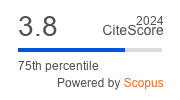Article | Open Access
Does Reduced Space Result in Fewer Rights? Controlled Shrinking in the Urban Renewal of Genoa
| Views: | 2795 | | | Downloads: | 989 |
Abstract: This article explores three examples of urban design initiatives in Genoa in an attempt to highlight the potential and possible contradictions that controlled shrinking projects pose for the future of contemporary cities. Genoa, a symbol of Italian shrinking cities, has been strongly defined over the years by post-industrialisation transformations and by long-standing conditions of urban shrinkage. Despite facing continuous shrinkage, local urban development policies have historically focused exclusively on urban growth and expansion. Only recently have some areas in Genoa started to adopt spatial planning experiences that actively pursue degrowth policies, aiming to reduce existing urban fabric and decrease urban density. These initiatives are adopted in specific areas affected by demographic decline, hydrogeological risks, pollution, or catastrophic events. These spatial strategies justify their existence by invoking concepts like smart shrinkage and degrowth, promising improvements in both environmental and social conditions. However, this article notes how these concepts in Genoa are not aligned with the actual social and environmental challenges that these considerations and positions pose. In fact, the urban renewal initiatives introduced by institutions, in reality, lean towards a strategy of shrinkage and demolition of residential complexes, transportation infrastructure, and productive spaces, with diverse and conflicting results. The observed controlled shrinking projects neglect the synthesis of the territory as a palimpsest, ignore new ecological sensitivities, and lack awareness of the social implications associated with the concepts of smart shrinkage and degrowth. Instead, the three instances introduce a spatial project that still adheres to the underlying principles of growth and exploitation, presenting a shrinkage of the existing urban fabric that is mere illusion. It involves clearing out the deteriorated spaces only to fill them with capitalist rhetoric and models that, instead of creating space, undermine fundamental rights. Nonetheless, a closer examination of these three missed opportunities sheds light on the necessary knowledge, actions, and design approaches for a city to navigate urban shrinkage adeptly. This exploration also reveals the potential for the city to transform into a framework and platform, inspiring and guiding new urban planning paradigms for sustainable development.
Keywords: controlled shrinking; degrowth; demolition; Genoa; port city; smart shrinking; urban renewal
Published:
Issue:
Vol 9 (2024): Urban Shrinkage, Degrowth, and Sustainability: How Do They Connect in Urban Planning?
© Agim Kërçuku. This is an open access article distributed under the terms of the Creative Commons Attribution 4.0 license (http://creativecommons.org/licenses/by/4.0), which permits any use, distribution, and reproduction of the work without further permission provided the original author(s) and source are credited.


